Every age has its enemies. In the mid-20th century, Fascists were the evildoers. After World War II, Communists became civilization's public enemies. The bombings across London of July 7th have shown that terrorists remain today's designated masters of evil.
The word "terrorism" now appears in law books around the world and is gaining new legislative adoptions. Various civil sanctions apply to "terrorist organizations." It can be a crime to assist a terrorist organization.
But it is sometimes hard to determine who "they" -- the terrorists -- are. Whether organizations are terrorist or not is largely an administrative determination motivated by politics. Politically divided, the UN repeatedly passes resolutions against terrorism but cannot agree on how to define the term.
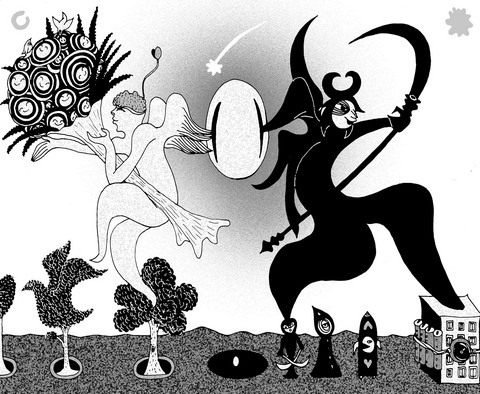
ILLUSTRATION: MOUNTAIN PEOPLE
The standard definitions of terrorism are all off the point. The US Congress has, for example, set forth a formula that requires a motive to coerce or intimidate a population or influence a government. But this definition does not even clearly cover the terrorist attacks of September, 2001. Perhaps the motive of the airline hijackers was simply to kill infidels, which would put them outside the Congressional definition.
I think it a mistake to try to define terrorism in the same way that we define theft or murder. Too many contested issues exist. A better approach is to identify the questions that arise in thinking about terrorism and clarify why people experience terror as a result of certain acts of violence. Then we can define terrorism with reference to all these variables, but without making any one of them decisive.
The three primary points of controversy are: identification of the victims, the perpetrators, and the relevance of a just cause.
Must terrorism's victims be civilians? Some think so, but al-Qaeda blew up the USS Cole and most people regarded the killing of the sailors onboard a terrorist attack. The same logic applies in the guidelines for President Bush's military tribunals, which target terror against military personnel as well as civilians.
There is a similar question about the perpetrators. Can terrorists be soldiers or state agents? Islamic states within the UN favor this position, and I think they are right. The International Criminal Court will prosecute heads of states for war crimes. By the same logic, state officials should bear responsibility for acts of terrorism committed under their authority.
The most controversial issue in defining terrorism is captured by slogan: "One person's terrorist is another's freedom fighter." The problem is whether a good cause justifies using horrendous means. Islamic states think that it does, which puts this group at odds with the Western opinion.
Those who opt for terror always believe their cause is just. Sometimes it is, sometimes not. No American would be happy about branding the Boston Tea Party an act of terrorist aggression against British property. Nor would any Frenchman accept a description of the maquisards of the French Resistance as terrorists. Yet both committed acts of violence against property and people, and so do meet the conventional tests of terrorism.
There are other troubling borderline cases. What about the Stern gang's blowing up of Jerusalem's King David Hotel in order to liberate Palestine from the British? Is there good terror and bad terror? For some the political cause counts heavily, but in fact there are only a few historical cases in which most people actually disagree.
Behind the phenomenon, the nagging question remains: why is terrorism different, why does it require a special definition, why are we more afraid of this from of violence compared to ordinary criminal acts?
One reason is that terrorism is typically organized activity. In July 2002, when an Egyptian opened fire and killed two people waiting in line at the El Al counter at Los Angeles International Airport, the FBI decided that the suspect was not a terrorist because he was acting alone. Terrorists are organized, and the group can continue even after the individual is caught. That makes them more frightening than ordinary criminals.
For terrorists to strike terror in the public mind they must act in public. Criminals prefer secrecy. Terrorists crave publicity. Effective terrorism is always captures headlines. It is unexpected, with great shock value. Like good theater, it always represents some moral drama acted out on a large stage.
The public has as an additional reason to experience the September 2001 attacks on America as terrifying. Terrorists typically act out of moral or religious conviction: they feel no guilt, no remorse. They are prepared to do it again.
But suppose we tried to define the attacks of Sept. 11, 2001 as terrorism by using the following formula: a violent, organized, and public attack by private parties on other civilians, without guilt, regardless of the justice of the cause. Problems remain, because each of these six dimensions admits of counter-examples.
Sometimes the victims are military and the perpetrators are states. Sometimes the cause appears to be just, and one person with enough weapons but no organization might wreak terror. A conspiracy to lace letters with anthrax might incite terror in private and some terrorists might feel remorse and guilt about their actions. All six dimensions of terrorism admit of counter-examples.
This should not be surprising. Many definitions face this problem, and the great 20th century philosopher Ludwig Wittgenstein proposed another way of dealing with troublesome definitions: explaining concepts by the analogy of "family resemblances." Family members might share many characteristics: height, skin, hair color, various other physical features. Some might have some of these but not all, others might have a different collection of the common characteristics. Though there is no single common feature, are all readily identified as members of the same family.
Terrorism bears these qualities of family relationship. At least six variables are relevant but exceptions occur in each of the six. Complex accounts with built-in exceptions may make lawyers uncomfortable, but in the real world they are perhaps the best we can devise.
George Fletcher is Cardozo professor of jurisprudence at Columbia University's School of Law. His latest book is Romantics at War: Glory and Guilt in the Age of Terrorism.
Copyright: Project Syndicate
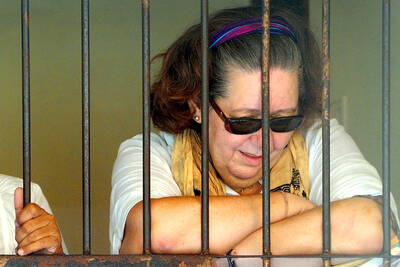
Indonesia was to sign an agreement to repatriate two British nationals, including a grandmother languishing on death row for drug-related crimes, an Indonesian government source said yesterday. “The practical arrangement will be signed today. The transfer will be done immediately after the technical side of the transfer is agreed,” the source said, identifying Lindsay Sandiford and 35-year-old Shahab Shahabadi as the people being transferred. Sandiford, a grandmother, was sentenced to death on the island of Bali in 2013 after she was convicted of trafficking drugs. Customs officers found cocaine worth an estimated US$2.14 million hidden in a false bottom in Sandiford’s suitcase when
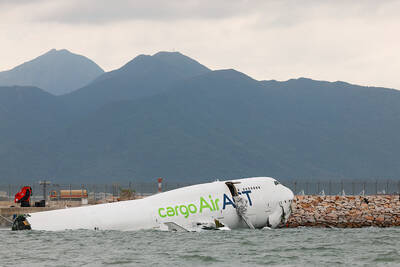
CAUSE UNKNOWN: Weather and runway conditions were suitable for flight operations at the time of the accident, and no distress signal was sent, authorities said A cargo aircraft skidded off the runway into the sea at Hong Kong International Airport early yesterday, killing two ground crew in a patrol car, in one of the worst accidents in the airport’s 27-year history. The incident occurred at about 3:50am, when the plane is suspected to have lost control upon landing, veering off the runway and crashing through a fence, the Airport Authority Hong Kong said. The jet hit a security patrol car on the perimeter road outside the runway zone, which then fell into the water, it said in a statement. The four crew members on the plane, which
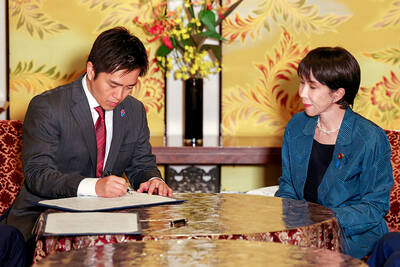
Japan’s ruling Liberal Democratic Party (LDP) and its junior partner yesterday signed a coalition deal, paving the way for Sanae Takaichi to become the nation’s first female prime minister. The 11th-hour agreement with the Japan Innovation Party (JIP) came just a day before the lower house was due to vote on Takaichi’s appointment as the fifth prime minister in as many years. If she wins, she will take office the same day. “I’m very much looking forward to working with you on efforts to make Japan’s economy stronger, and to reshape Japan as a country that can be responsible for future generations,”
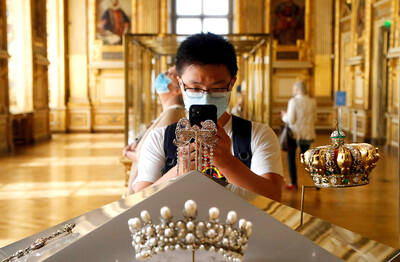
SEVEN-MINUTE HEIST: The masked thieves stole nine pieces of 19th-century jewelry, including a crown, which they dropped and damaged as they made their escape The hunt was on yesterday for the band of thieves who stole eight priceless royal pieces of jewelry from the Louvre Museum in the heart of Paris in broad daylight. Officials said a team of 60 investigators was working on the theory that the raid was planned and executed by an organized crime group. The heist reignited a row over a lack of security in France’s museums, with French Minister of Justice yesterday admitting to security flaws in protecting the Louvre. “What is certain is that we have failed, since people were able to park a furniture hoist in the middle of